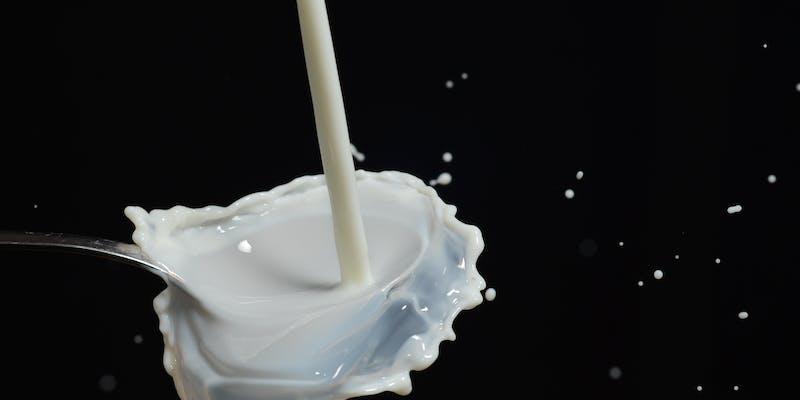Nutritional Values and Benefits: Cow Milk Versus Buffalo Milk
Feb 21, 2024 By Madison Evans
Milk is wonderfully versatile in cooking. Delicious and nutritious products like clarified butter, yogurt, and cheese require milk. It is vital to infant, child, and adult diets and culinary functions. This is due to its richest source of naturally occurring proteins, vitamins, and calcium essential for healthy development and wellbeing. Research revealed that buffalo and milk cow breeds milk have different flavonoids and health benefits.
Texture And Taste
Talking about cow's and buffalo's milk's nutritional and textural differences is crucial. Its thinner texture makes cow's milk easier to digest and lower in fat. Richer buffalo milk is thicker. Although buffalo milk has less water, milk cow breeds dairy milk has more protein. As a vitamin and mineral superfood, buffalo milk is high in potassium, magnesium, calcium, and phosphorus. The vitamin content of cow's milk is similar. Note the color difference. Unlike beta-carotene-colored cow's milk, buffalo milk is authentic and creamy white. Why now? This is because most buffalo milk beta-carotene becomes colorless vitamin A. Apart from aesthetics, color variation reveals each milk's unique qualities. These differences have a big impact on our products, too. The creaminess of buffalo milk made desserts and cottage cheese richer and tastier, according to a 2019 study.
Milk Storage

Subsequently, we shall examine these two milk varieties' operational characteristics and longevity. The velvety texture of buffalo milk significantly elevates the flavor of both cottage cheese and thicker, creamier desserts. The lighter texture and slight wateriness of cow's milk render it an optimal choice for daily consumption. However, in preserving their freshness, there is an unambiguous victor. Chilling buffalo milk in the refrigerator can be extended for a longer duration. The rationale for this is the heightened peroxidase activity detected in buffalo milk.
This indicates no need to worry about spoilage during the prolonged storage period. Conversely, the maintenance required for cow's milk is relatively low. It should be utilized within two days before any freshness deterioration. This aspect should be carefully considered, especially when planning grocery trips or overseeing the operations of a café or bakery. The study conducted in 2021 emphasized the importance of this matter, noting that storage and usage patterns significantly influence the quality of milk-based products.
Health Benefits
Buffalo milk is great for its blood pressure-lowering properties, broadly speaking, due to potassium and beta-lactoglobulin. It is particularly useful for individuals with PCOD, hypertension, kidney issues, or weight problems because of its lower cholesterol content material in contrast to cow milk. Buffalo milk carries a fantastic assortment of nutrients, along with protein, minerals, and antioxidants, in evaluation to milk cow breeds dairy milk. These nutrients are divine for strengthening the bones and heart. This distinction needs to be not unnoticed, no matter the fact that buffalo milk carries more energy, fats, and lactose than cow milking. Those on a strict calorie limit or lactose sensitivity might also discover this an inconvenience.
Lactose Intolerance
Buffalo milk has emerged as a unique substitute for people with mild cow's milk allergic reactions or lactose intolerance. Numerous patients, including those with eczema and psoriasis, locate alleviation in buffalo milk. These findings are based on anecdotes rather than scientific research. An estimated 30% of respondents to a survey carried out in 2022 observed a discernible amelioration in allergy symptoms and digestion after undergoing the buffalo milk transition.
On the contrary, scholars contend that additional thorough inquiries are necessary to establish the benefits unequivocally. Despite its unique and adjustable protein shape, its lactose content material may also make buffalo milk difficult for people with severe lactose intolerance. Preexisting situations or food-hypersensitive reactions such as allergies need to be discussed with your doctor before making dietary adjustments.
Nutritional Comparison

Buffalo and cow's milk have different nutritional compositions. Buffalo milk has 81.1% water compared to 87.8% in cow milk. Buffalo milk is thick because to this distinction. Buffalo milk's 4.5g protein per serving is better than cow milk's 3.2g. This higher protein content may help people eat more protein. Buffalo milk has 8g of fat per serving, whereas cow milk has 3.9g. Due to its high-fat content, creamy buffalo milk provides 110 kcal against 66 in cow milk. It may matter to calorie-trackers. Adipose cow and prenatal buckwheat milk provide 4.9g and 4.8g carbs, respectively. Both lactose-rich milks include 4.9 grams of sugar. Buck milk includes 1.7% more monounsaturated fat, 3.2% more saturated fat, and 0.2g less polyunsaturated fat than cow milk.
Buffalo milk consists of 8mg of cholesterol as instructed per serving, even as cow milking carries 14mg. Both milk varieties, predominantly composed of lactose, have a sugar content of 4.9 grams. In contrast to cow milk, buffalo milk includes 3.2% more saturated fat and 1.7% extra monounsaturated fat, with a marginally lower awareness of polyunsaturated fats (0.2g). One serving of buffalo milk encompasses 8mg of cholesterol, even as cow milk consists of 14mg. Additionally, each serving of this product contains 195 micrograms of calcium, significantly higher than the 120 micrograms found in cow milking.
Mineral Content
The subtle variations and similarities in the mineral makeup of bovine and buffalo milk are significant. Although both milk varieties contain advantageous minerals, their distinctions must be recognized. Buffalo milk contains more calcium (0.18 percent) than cow milk (0.12%). This differentiation is significant because calcium is indispensable for preserving optimal dental and skeletal health.
Buffalo milk has 0.14 percent more phosphorus than cow milk. Both phosphorus and calcium guide many vital physiological processes and help maintain bone integrity. Muscle and nerve function need magnesium; cow milk has 0.01% and buffalo milk is 0.02%. Cow and buffalo milk provide 0.15% and 0.11% potassium, respectively. Fluid balance and circulation need potassium.
Due to its lower salt content (0.04% vs. 0.05%), buffalo milk may be better for high blood pressure management and sodium control. Chloride, important for digestion and fluid stability, is found in lower concentrations in buffalo milk (0.07%) than in cow milk (0.10%). Predictably, both varieties of milk contain 0.18 percent citrate. Energy production and prevention of kidney stones are two additional functions of citrate.







